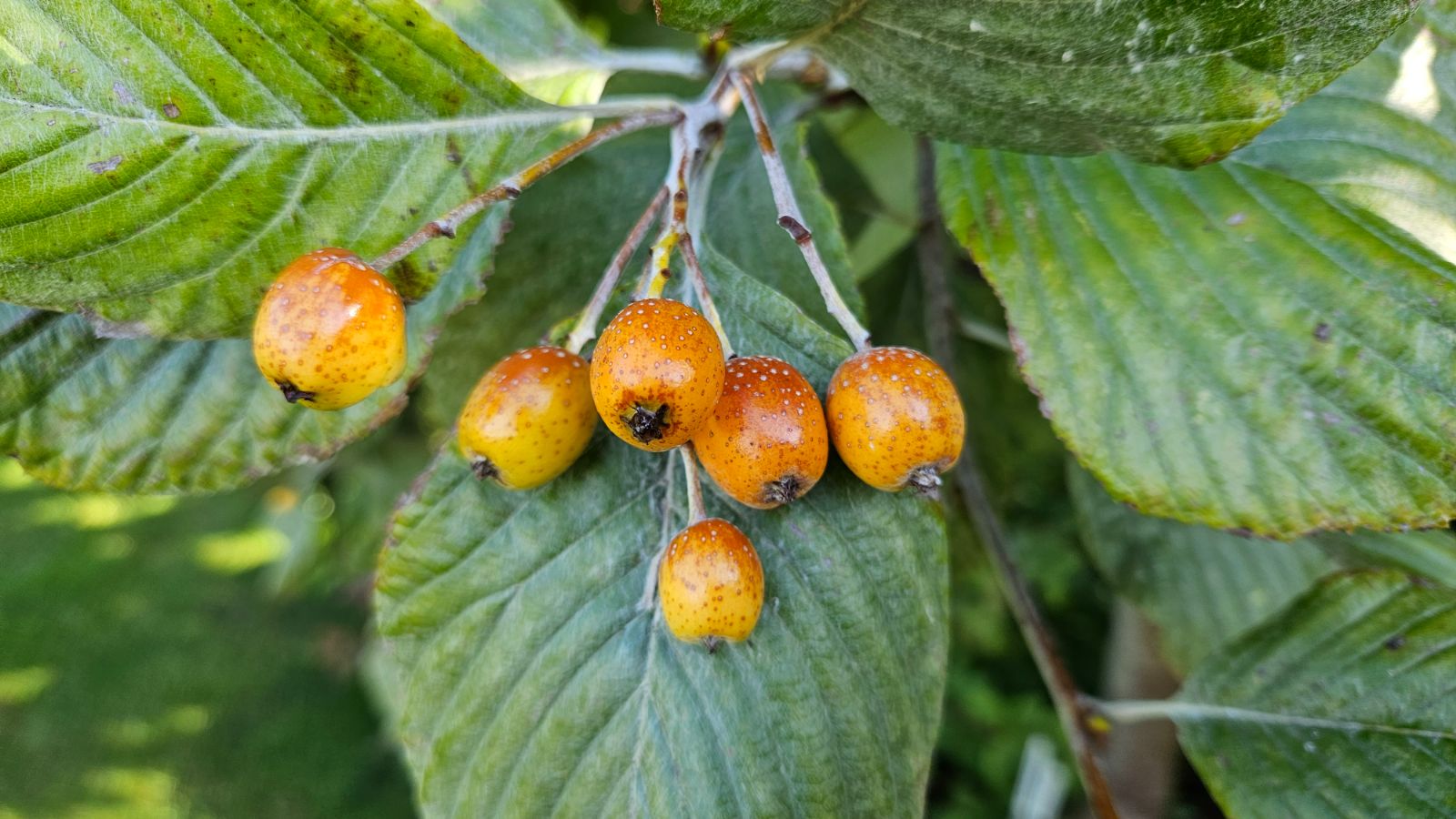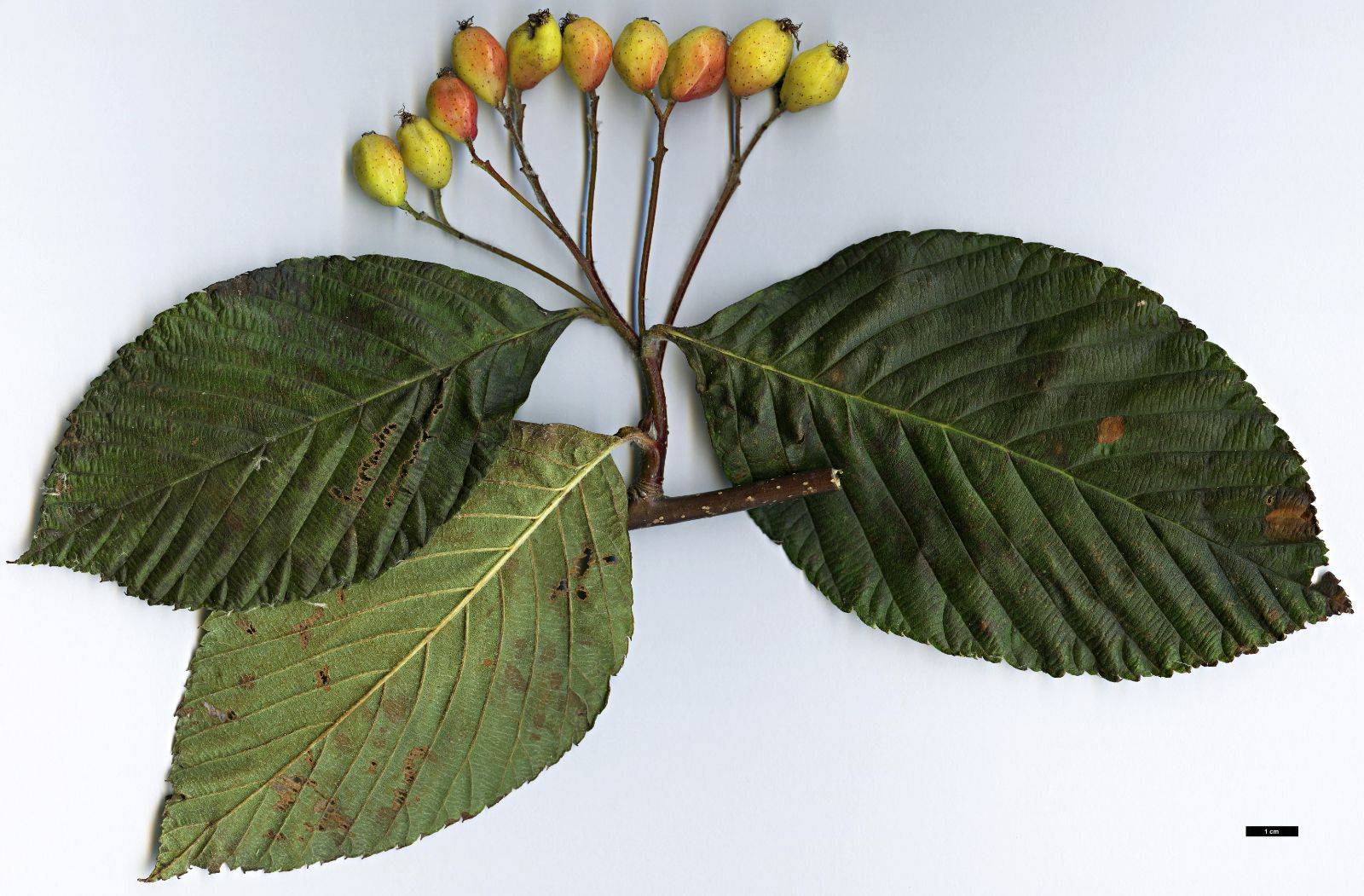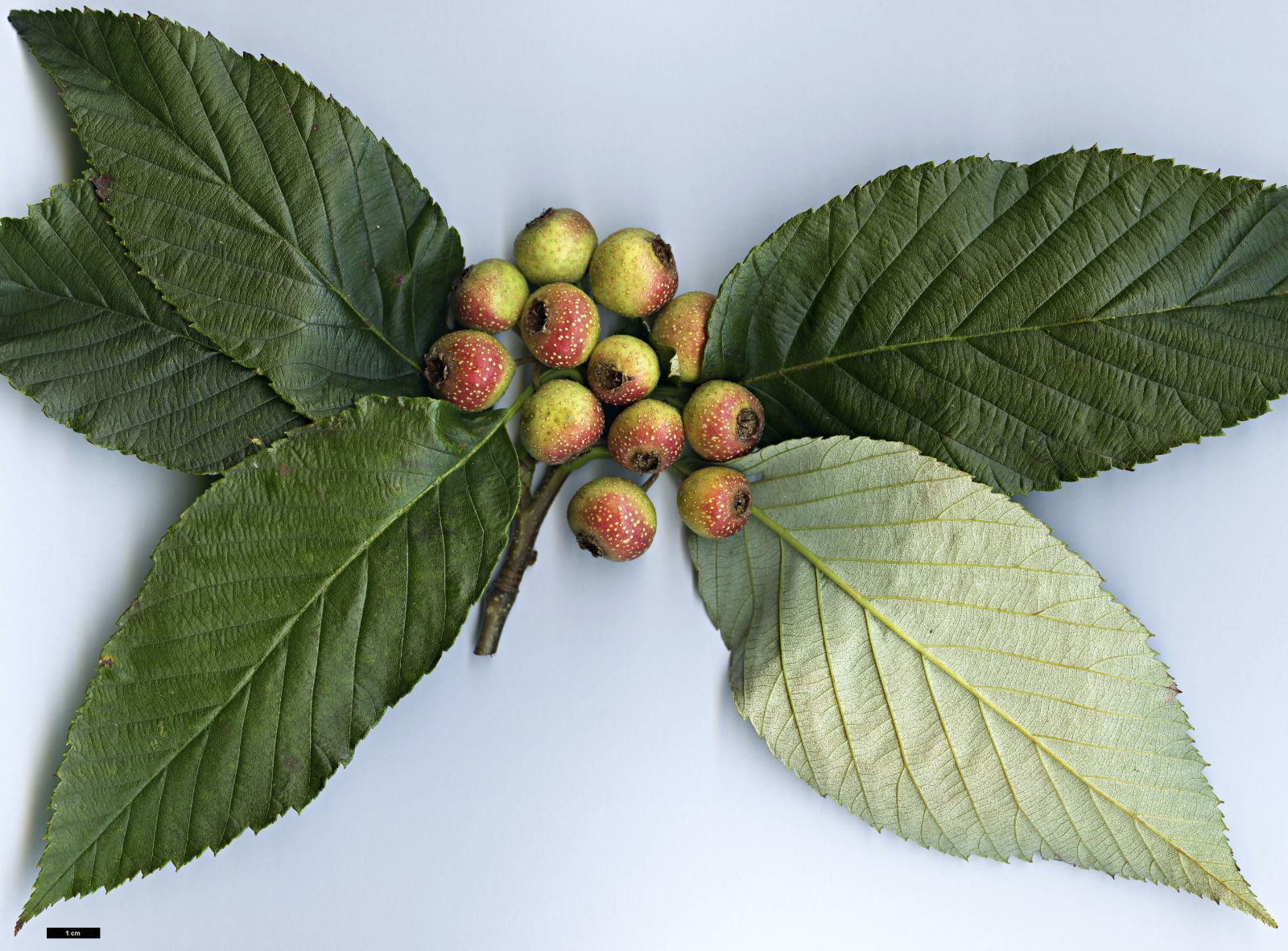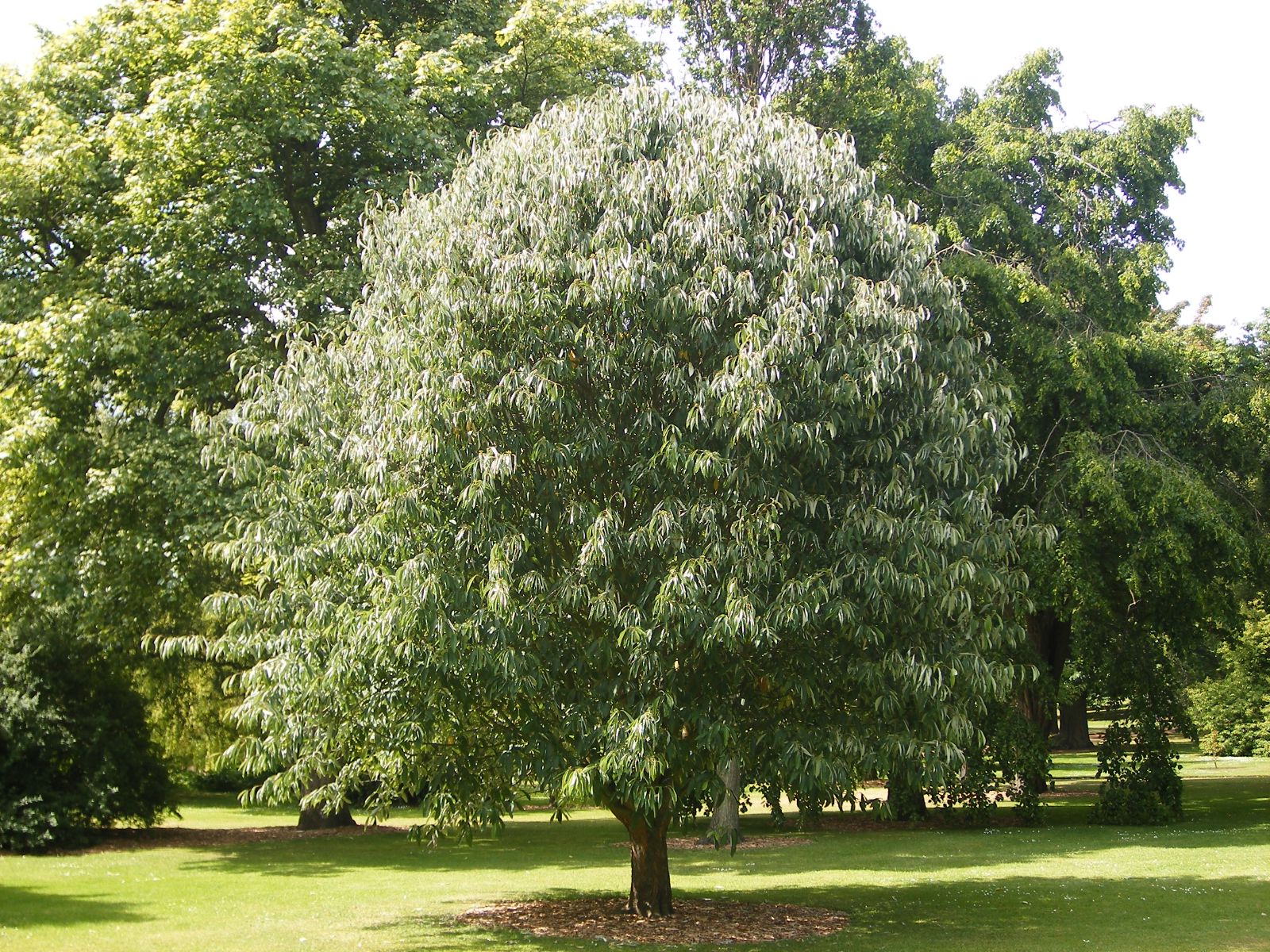Griffitharia
Credits
New article for Trees and Shrubs Online.
Recommended citation
'Griffitharia' from the website Trees and Shrubs Online (treesandshrubsonline.
Family
- Rosaceae
Editorial Note
We have published this stub genus article as part of a wider reorganisation of Sorbus sensu lato articles. This work will enable a new revision of Sorbus sensu stricto to commence in 2023 and bring the nomenclature of this complex group of plants up to date in line with modern treatments.
TC, August 2023.
A genus of 19 species and 1 variety of small to medium-sized trees to c. 20 m tall, distributed in the Sino-Himalaya from eastern Afghanistan to western and central China, primarily occurring in the temperate zone above 1850 m up to c. 3300 m asl. Differentiated from related genera by: leaves with craspedodromus venation, densely tomentose beneath (at least at maturity, less so in G. wardii), margin serrate or doubly serrate or shallowly lobulate, hairs on lamina white or silvery, but some species have rust-coloured hairs along the veins. Fruits 7–20(–30) mm, ovoid, oblate or rarely ellipsoidal, green, often tinged pink or purple, ripening yellowish-brown (not red). Flowers/fruits with 2–5 styles and carpels, 20 stamens. Styles joined at base and appear fused in their lower ⅓. The two ovules in each carpel are superposed, seeds radially inserted. Calyx persistent with somewhat fleshy lobes. Hypanthium nearly fully adnate to the ovary, ovary disk epigynous. Fruits conspicuously lenticellate (elenticillate in G. lanata and G. thibetica). Carpels inserted into flesh off a central axis; flesh rather grainy. Seeds rounded to ovoid, c. ½ thick as long (?) resembling those of Malus. (Rushforth 2018).




